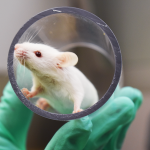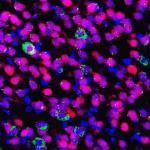You are here
- Home
- Our Impact
Our Impact

Tuesday, January 16, 2024
Researchers Identify Why Cancer Immunotherapy Can Cause Colitis

Thursday, December 21, 2023
Could Ginger Help Treat Autoimmune Disease Symptoms?

Friday, December 8, 2023
Obesity Leads to a Complex Inflammatory Response Inside Fat Tissue

Wednesday, November 22, 2023
Research Finds Potential Target for Cardiovascular Disease in Diabetes

Monday, October 16, 2023
Scientists Develop New Model for Understanding Sudden Death in Epilepsy

Wednesday, October 11, 2023
Tumor-Destroying Soundwaves Receive FDA Approval for Liver Treatment in Humans

Friday, September 22, 2023
For Glioblastoma, A New Clinical Trial Fosters Innovation and Hope

Thursday, August 10, 2023
An Adjuvanted Intranasal Vaccine for COVID-19 Protects Both Young and Old Mice

Monday, July 31, 2023
Modifications to Amino Acids in Sperm Could Be Behind Infertility

Wednesday, June 7, 2023
Researchers Overcome Major Barrier in Artificial Placenta Research